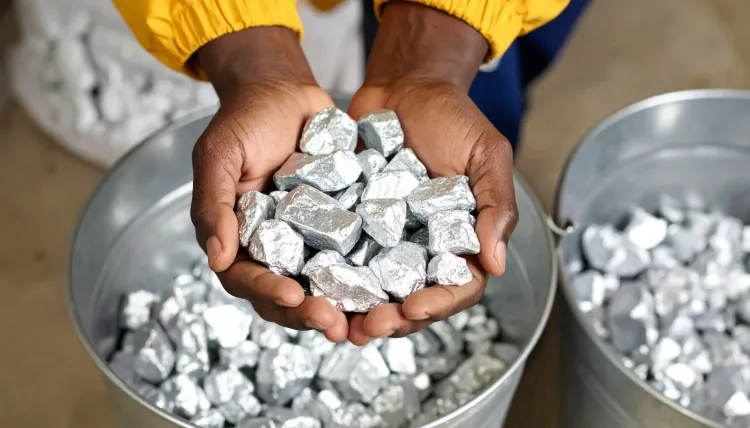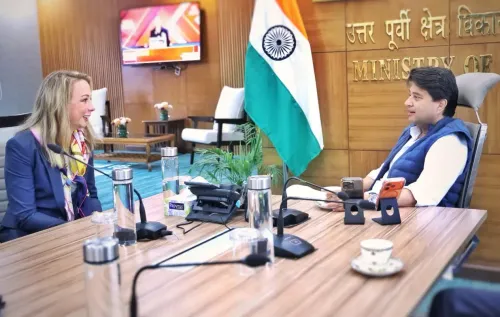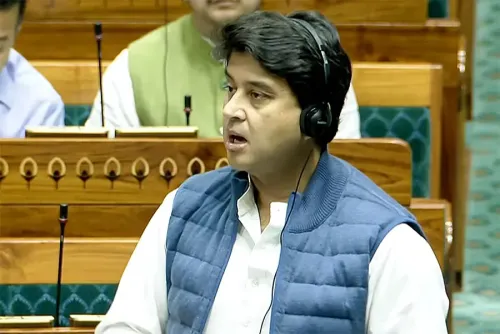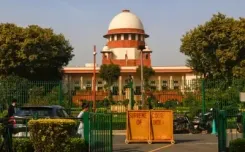Is India Ready to Assume a Central Role in the Rare Earth Elements Supply Chain?

Synopsis
Key Takeaways
- India possesses 8% of global REE reserves.
- China's dominance in REE mining and refining is expected to decline.
- The Indian government is working to boost domestic production through the NCMM.
- REEs are vital for clean energy, automotive, and defense sectors.
- International cooperation is essential for developing alternative supply chains.
New Delhi, July 8 (NationPress) India possesses 8% of the global reserves of rare earth elements, positioning itself to become a significant player in the shifting international supply chain as China's current stronghold is anticipated to diminish, according to a report by CareEdge released on Tuesday.
While China currently leads in both mining and refining, its market share is predicted to decline from 69% to 51% in mining and from 90% to 76% in refining by 2030, as noted by the International Energy Agency.
This shift indicates a broader global initiative to create more balanced and robust supply chains.
Despite India's substantial reserves, the nation currently contributes less than 1% of the global mining of Rare Earth Elements (REE), leading the government to initiate the National Critical Mineral Mission (NCMM) in 2025 to enhance self-reliance in this sector.
As per the 2023 Indian Minerals Yearbook, India has identified 130 deposits, with the coastal states—namely Tamil Nadu, Kerala, Andhra Pradesh, and Odisha—housing the majority of these reserves. Recent restrictions by China on REE exports have prompted Indian Rare Earths Limited (IREL), a central government enterprise, to contemplate reducing exports to conserve resources domestically and boost local processing capabilities, the CareEdge report highlights.
Although India ranks third in global REE reserves, it still faces challenges in becoming a leading producer. The government is focused on developing domestic manufacturing capabilities and is considering providing fiscal incentives based on production.
REEs play a crucial role across multiple sectors, particularly in clean energy technologies, the automotive industry, and defense systems. For nations with advanced defense and infrastructure projects, reliable access to REEs is vital to prevent potential disruptions that could result in increased costs or delayed timelines, the report suggests.
In the short term, however, global dependency on the existing dominant supply source is expected to continue. While investments in exploration and processing are rising worldwide, alternative supply chains have yet to reach the necessary scale or reliability to significantly alter current sourcing patterns, the report further emphasizes.
The speed at which these alternative supply channels emerge will be critical. Enhancing investment, streamlining permitting processes, and fostering international partnerships are essential to mitigate concentration risks. As these initiatives gather momentum, the global REE landscape is projected to become more varied and resilient, ensuring critical sectors remain adequately supported amidst changing geopolitical and economic climates, the report further states.
Since 2020, the US Department of Defense has allocated over $439 million to establish domestic rare earth element supply chains. However, refining remains a significant challenge, as much of the ore mined in the US is currently sent to China for processing.
China has consistently leveraged the supply of rare earth elements to gain an advantage in its trade conflict with the US, prompting the latter to seek partnerships with other nations to reduce reliance on China.
REEs comprise a group of 17 strategically critical minerals, categorized into Light Rare Earth Elements (LREEs) like neodymium (Nd) and praseodymium (Pr), vital for electric vehicle motors and wind turbines, and Heavy Rare Earth Elements (HREEs) such as dysprosium (Dy) and terbium (Tb), used in military-grade magnets and high-performance electronics.










